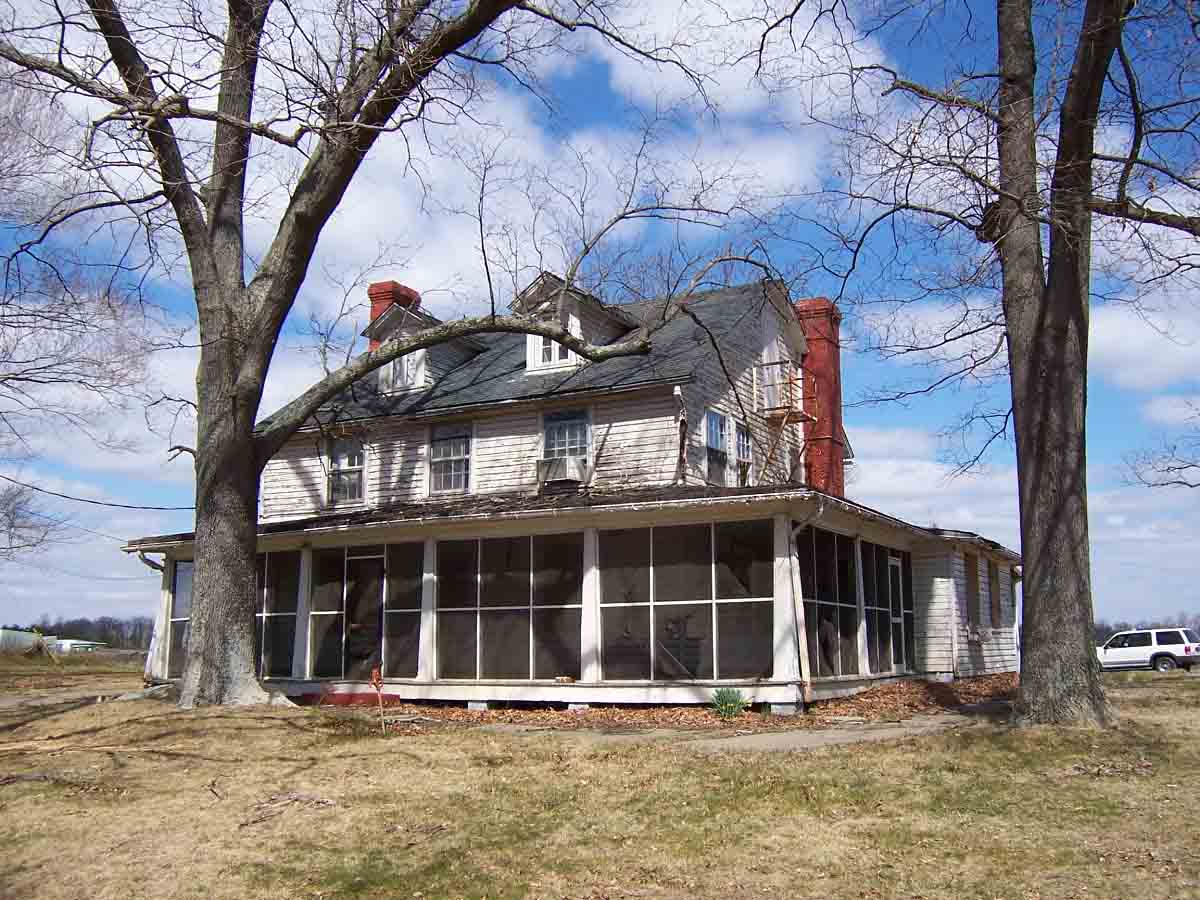| Barrett House |
| by Debbie Robison |
| COLONIAL FARM |
|
In 1729, at a time when the The road that The Barrett House was built adjacent to was
called the Giles Run, which passes through the tract, was named after
Giles Tillett, who obtained an early land grant along another portion of the
run.[2] |
| SUBSEQUENT PROPERTY OWNERS |
|
During the Civil War, the property was owned by Augustus
Carusi. |
| WIMSATT OWNERSHIP |
|
In 1891,
William Wimsatt purchased the 258-acre property.[3] Barrett
House was likely constructed around the turn of the twentieth century as a
country home for a lumber merchant working and residing in the The house
value in 1901 is listed in the tax records as $774. This value remained
constant through the time that the house was purchased by The United States government
for use by penal officials. A newspaper
story noted that many The little Wimsatt
founded the Johnson and Wimsatt Lumber Company, of the The Johnson
and Wimsatt Lumber Company owned a three-masted 91-foot schooner, which carried
raw lumber to the company wharfs in Johnson
& Wimsatt suffered losses in 1902 when a fire swept the company wharf on At the channel front and along the
sides of the proposed wharf extension…large pine piles will be used, sawed off
at extreme low water. These will never rot. On top of these piles 12 by 12 |
| POLLOCK OWNERSHIP |
|
When William
Pollock purchased the property in 1903, he entered into a trust agreement and
used the property as collateral to secure payment to Wimsatt. He was further
required to obtain insurance on the house for the value of $700. In 1904,
Wimsatt mortgaged his household furniture and
library effects, which he had in his At the time
of purchase, Pollock was 25 years old and unmarried, though he married shortly
thereafter. His occupation in 1900 was listed on the census record as Scientific Aid – Government. In the 1910
population census, Pollock’s occupation was listed as stenographer for the
Bureau of Manufactures. William and Ray F. Pollock, his wife, used the During
Pollock’s ownership, the house was known as “Pine Croft.”[12] The
use of pine wood in the construction of the house, including the wood floors,
suggests a probable basis for the name origination. Mrs.
Pollock was active in the community and, as president of the local Woman’s Good
Road Association, held an oyster supper at the house.[13] In August
1910, Pollock sold the house to Percy Skinner, who had been leasing the house
for two years. Pollock purchased the house back in 1912. Along with
other parcels and homes, The Barrett House was purchased by the Captain Morris
Barnard, Superintendent of D.C. Penal Institutions, likely lived in the house
during all or part of his tenure. Barnard’s home, a handsome, almost
pretentious place, is about a mile down the road from the Lorton reformatory.
It is about half-way between the reformatory and the workhouse, where prisoners
for lesser offenses are confined…[14] Capt. Barnard seemed tired as he sat
with reporters on the spacious veranda of his white, wood home, a little more
than a mile from the reformatory…[15] [1] Northern
[2] Northern Neck Grant No. 3:145 dated December 4, 1706; Deed specifying “Giles Tillett’s Run is FXDB R1(18):276 dated December 4, 1788. [3] [4] “Prison
Cause of Suit,” [5] Federal
Population Census, [6] FXDB O5(119):261, April 18, 1893. [7] “ [8] FXDB C6(133):141, January 9, 1899. [9] “Blaze on River Front,” Post, April 13, 1902, p. 2. [10] “Planing Mill on the River,” Post, July 12, 1902, p. 12. [11] FXDB P6(146):465, May 4, 1904. [12] [13] [14] “Riot Crushed, Police Still Guard Lorton,” Post, July 9,1933, p. 22. [15] “Rebellion
and Incendiarism Are Fear as Heavy Guard Keeps Vigil Around Lorton,” |

 The property had several owners over time.
The original
3,500 acre tract was subdivided into lots in 1788 when John Lawson purchased a
lot of 970 acres. The tract was further subdivided in 1851 when Edward Swann
purchased 258 acres.
The property had several owners over time.
The original
3,500 acre tract was subdivided into lots in 1788 when John Lawson purchased a
lot of 970 acres. The tract was further subdivided in 1851 when Edward Swann
purchased 258 acres.